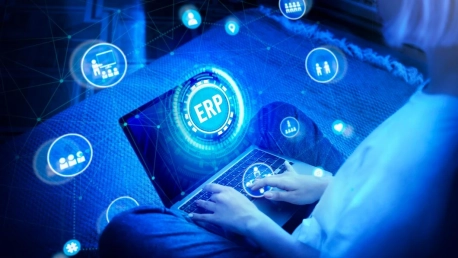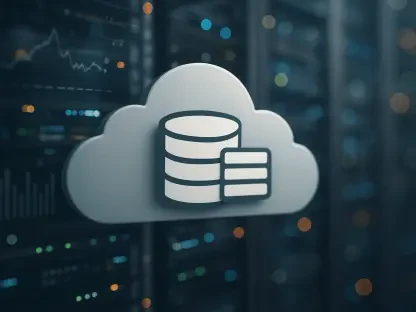Enterprise Resource Planning (ERP) is an integrated approach to managing a company’s core operations, encompassing everything from supply chain management to human resources. However, such systems are about to undergo a significant transformation, thanks to an intriguing partnership between Amazon Web Services (AWS) and SAP. This alliance aims to incorporate generative artificial intelligence (AI) into the ERP framework, potentially redefining efficiency, responsiveness, and sustainability in business operations. As we delve into the potential impacts of this collaboration, we can see the outline of a future where ERP systems are not simply tools but transformative forces in the enterprise space.
The Foundation of the AWS and SAP Collaboration
Enhanced Cloud ERP Experiences
The strategic collaboration between AWS and SAP is foundational to modern cloud ERP innovation. By streamlining the adoption of RISE with SAP on AWS, the partnership promises a less cumbersome and more efficient journey to cloud-based operations for businesses. Enhanced scalability and agility will likely be the cornerstones of this transformation, enabling swift adaptation to fluctuating market conditions and customer demands. These advancements could also translate into more attractive economics for businesses by optimizing cloud resource usage and reducing unnecessary expenditures.
Embracing Generative AI for Business Applications
Businesses poised to embrace the collaboration will likely experience a marked shift in how they leverage AI for their ERP applications. By embedding generative AI models like Amazon’s Bedrock’s large language models (LLMs) within the SAP AI Core, the effort goes beyond mere efficiency. It aims to craft intelligent systems capable of generating outputs such as predictive analytics and decision-making insights. This elevated level of automation and analysis is forecasted to become a game-changer in enterprise planning and execution, ushering in an era of heightened precision in strategic business outcomes.
Strengthening Core Business Operations with AI
The Role of Large Language Models
In this partnership, the immense processing power of AI, particularly through large language models such as Amazon’s Titan, represents a formidable asset for SAP customers. These LLMs can digest and interpret enormous data sets, empowering businesses to uncover insights that were previously unattainable. Tailored to align with business objectives and informed by a wealth of data-driven analysis, such AI advancements stand to redefine the very nature of ERP systems: they transform them from static data repositories into dynamic, predictive engines that anticipate industry trends and customer needs.
Building Tailored Applications with Generative AI
Through the interconnected capabilities of various AI providers and the generative AI hub within the SAP AI Core, enterprises can construct applications precisely tailored to their operational needs. Utilizing models like Anthropic’s Claude 3, enterprises are equipped to harness their unique datasets for the development of highly specialized applications. This level of customization is pivotal, opening pathways to innovation and potentially repositioning companies at the forefront of their respective industries.
Performance and Sustainability Advancements
Utilizing AWS Graviton3 Chips
Sustainability and performance find common ground in SAP’s plan to leverage AWS’s Graviton3 processors. These chips are engineered to boost the performance of the SAP HANA Cloud while aligning with the imperative for greener cloud computing. The anticipated improvements in computational efficiency suggest not only faster data processing but also reduced energy consumption. The strategic selection of Graviton3 chips underlines a commitment to the environment, heralding a new standard in the sustainable deployment of cloud services.
The Impact on SAP’s Suite of Applications
SAP’s suite of applications is not immune to the broad-reaching implications of this collaboration. The introduction of Graviton3 processors is set to permeate various solutions, ranging from SAP BTP to SAP Datasphere. This diffusion of state-of-the-art processing power across the SAP ecosystem underscores a broader vision: to imbue the entire suite with the capability to meet the growing demands for both performance and energy-efficient computing.
Expanding Cloud Infrastructure for SAP
Launch of Amazon EC2 High Memory Instances
SAP applications, particularly those such as SAP S/4HANA Cloud that are memory-intensive, stand to gain from the launch of Amazon EC2 High Memory instances. These instances represent the dedication of AWS to cater to the requirements of ERP applications, ensuring they operate at peak performance levels. With substantial memory capacities, these instances are uniquely positioned to handle the rigid demands of large-scale and intricate ERP workloads, potentially forging a new benchmark in cloud-based enterprise solutions.
Improving SAP HANA Database Performance
Empowerment of SAP HANA databases with expansive memory resources will likely facilitate superior performance. These technological augmentations aim to equip businesses with the agility to yield quicker insights and accelerate decision-making pipelines. This facet of the collaboration is crucial, as it not only enhances the operational efficacy of SAP HANA but also promises a tangible uptick in the velocity of business intelligence and data analytics.
Real-world Applications and Future Visions
Enterprise Resource Planning (ERP) systems, critical for managing a business’s essential operations, stand on the brink of a revolution. As these platforms handle tasks from supply chain logistics to HR, they’re set to be transformed through a fascinating union between Amazon Web Services (AWS) and SAP. This innovative partnership is set to infuse ERP systems with generative AI, promising to take business efficacy, agility, and eco-friendliness to new heights. Delving into what this collaboration might bring, we start to envision a future where ERP systems evolve beyond mere organizational tools. They’re poised to become catalysts of change, significantly altering the landscape of enterprise operations. As such, this technological fusion heralds a potential shift in the business world that could be as significant as the advent of ERP itself, setting a course for smarter, more adaptive, and sustainable business practices.









